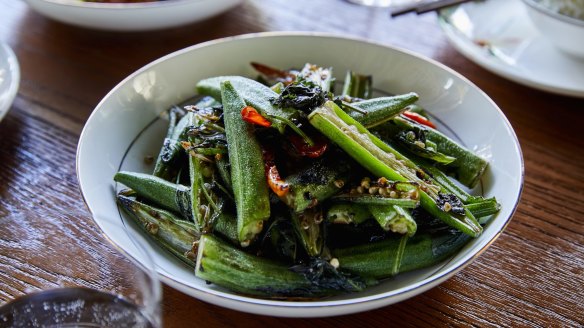What's the difference between white and brown anchovies?

What is the difference between white anchovies in the fridge and the brown ones in the tin? D. Crellin
A really good tinned anchovy should not be brown. Instead, it should have a deep red to silvery pink hue.
A brown anchovy is a sign of oxidation during processing and is common in cheaper anchovies. This is the type commonly used on pizzas and they're responsible for many consumers developing lifelong aversions to this delicious little fish.
Good tinned anchovies are made by ageing whole little fish in barrels for 10 to 18 months. During this time halophilic (salt-loving) bacteria help break down the protein in the flesh into glutamic acid. We detect this as deliciousness.
The fish are hand-filleted, laid out in their little tin sarcophagi and anointed with olive oil. The tins are then sealed but not pasteurised. They should be refrigerated to retain their freshness.
White anchovies are lightly salted for a short period before being filleted, packed in plastic packaging and covered in wine vinegar and vegetable oil and perhaps some citric acid and sodium benzoate as a preservative and then sealed.
Tinned anchovies have a deeper, saltier flavour and more developed umami while white anchovies are lighter, fresher tasting, with a clean, tangy finish. Both are delicious and make brilliant canapes, tapas, snacks and so on.

What is the gooey stuff in okra? O. Goodyear
That gooey stuff is what makes okra a contender to join the vegetable universe of superfoods. It is a gel made of a naturally occurring long-chain starch molecule called pectin and is referred to by dietitians as soluble fibre.
This solution of pectin and water forms a mucilaginous gel, also known as gooey stuff. It remains in solution, through the stomach, small and large intestine all the way through to the colon.
Here it becomes food for the good bacteria that help keep you healthy and happy. Think anti-inflammatory effects and the production of good hormones for mental health.
There are four types of soluble fibre: pectin, which is also found in beans, fruits (skin on) and other veg; beta-glucan, which is found in oats and rye; natural gums sourced from seeds and seaweed; and finally, the slightly troublesome inulin.
It's found in Jerusalem artichokes, where it can cause wind after eating, and is also found in onions and, to a lesser extent, in wheat. Okra contains about 3.4g of soluble fibre per 100g when ripe, oats 3g, ripe apricots 1.8g, and black and flageolet beans contain about 4g.
Letters
Recently we talked about the Adriatic red capsicum paste called ajvar. We said it was full of delicious amino acid. Reader R. Lowe wanted to know how capsicums, which are low in protein, can produce amino acid. Ripe capsicums have about 200mg per 100g of glutamic acid – nature's MSG. When you cook them and evaporate the water, this ratio changes so the paste can have about 600mg per 100g of glutamic acid. This is about the same amount of umami-inducing glutamic acid as sun-dried tomatoes and comte cheese.
Send your culinary conundrums and ingredient suggestions to brainfood@richardcornish.com.au or Twitter and Insta @foodcornish.
Appears in these collections
- More:
- Food
- Brain food
